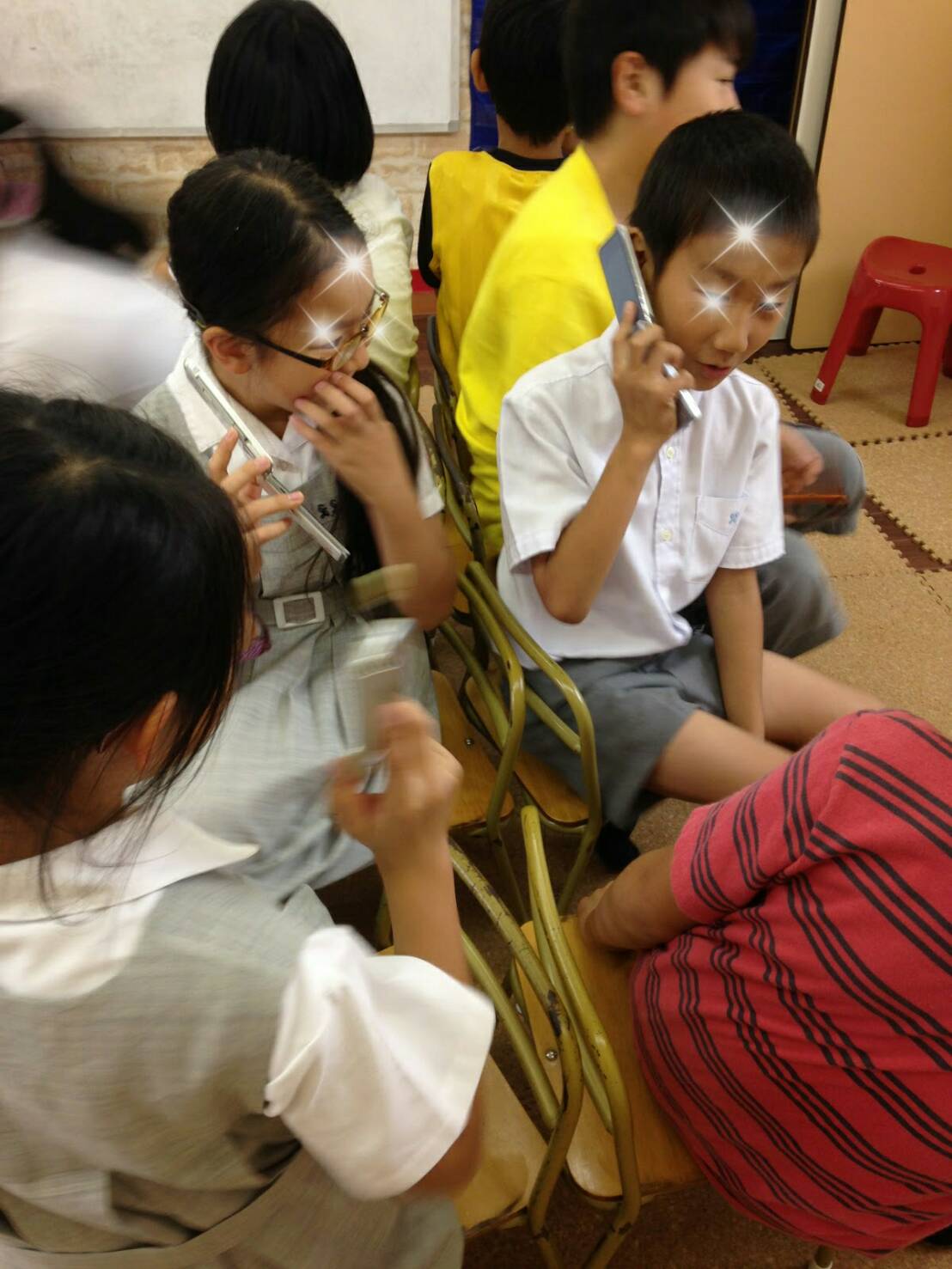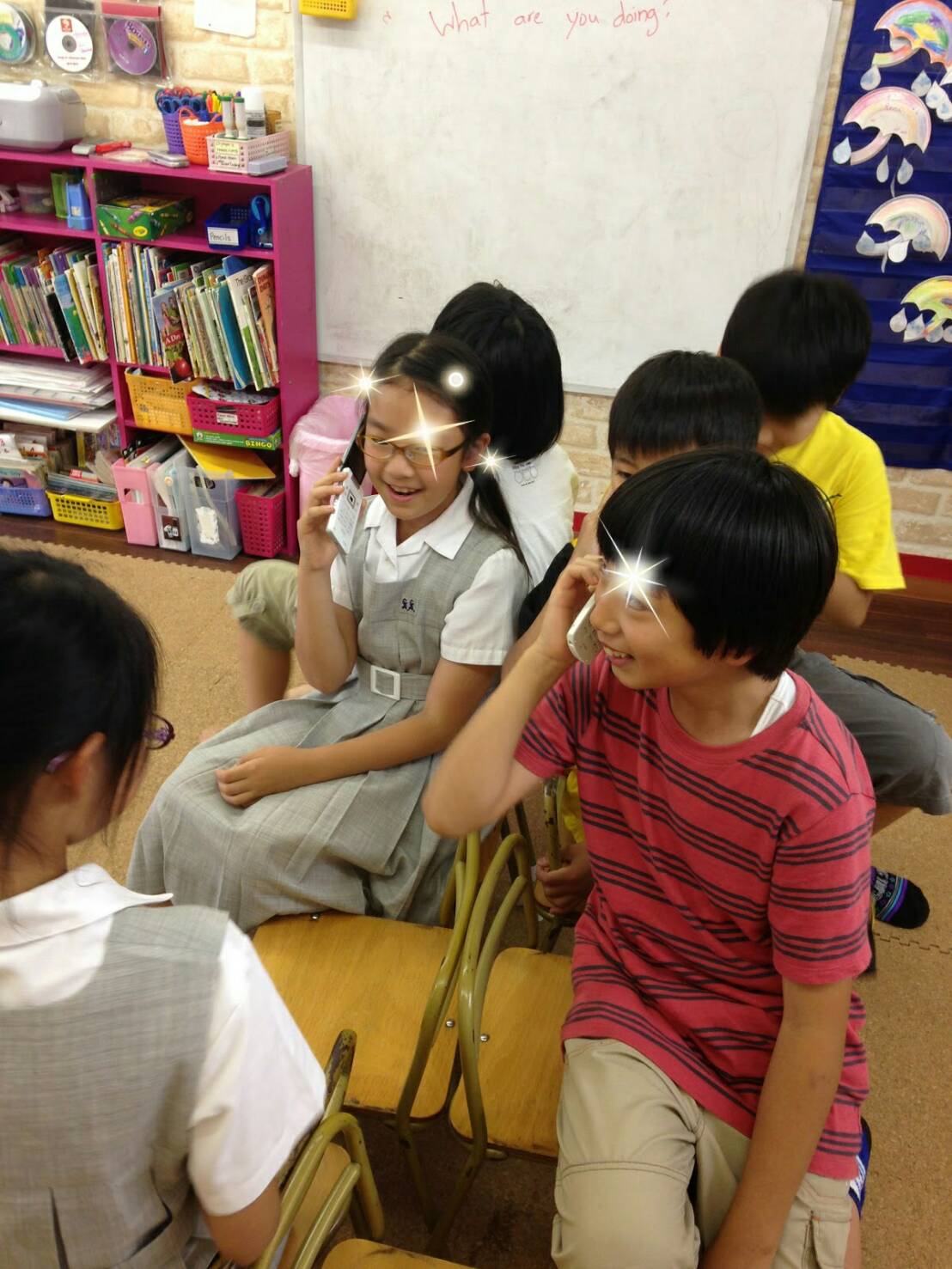

- 54. 10 Useful Pieces of Advice for Teaching with LEARNING WORLD #9 & 10
- 55. “Happy New Year!” “I don’t say that.”
- 53. Halloween 2019
- 52. READY Workbook Pg. 17
- 51. English-Uplift 1-Day Seminars
- 50. READY Workbook - vocabulary copying activity
- 49. 10 Useful Pieces of Advice for Teaching with LEARNING WORLD #8
- 48. 10 Useful Pieces of Advice for Teaching with LEARNING WORLD #7
- 47. 10 Useful Pieces of Advice for Teaching with LEARNING WORLD #6
- 46. 10 Useful Pieces of Advice for Teaching with LEARNING WORLD #5
- 45. 10 Useful Pieces of Advice for Teaching with LEARNING WORLD #4
- 44. 10 Useful Pieces of Advice for Teaching with LEARNING WORLD #3
- Kindergarten aged students
- Lower Elementary-school aged students
- Upper Elementary-school aged students
- Junior High and older students
- Others
18. LW Bk 3 "What are you doing?"
“WHAT ARE YOU DOING?”
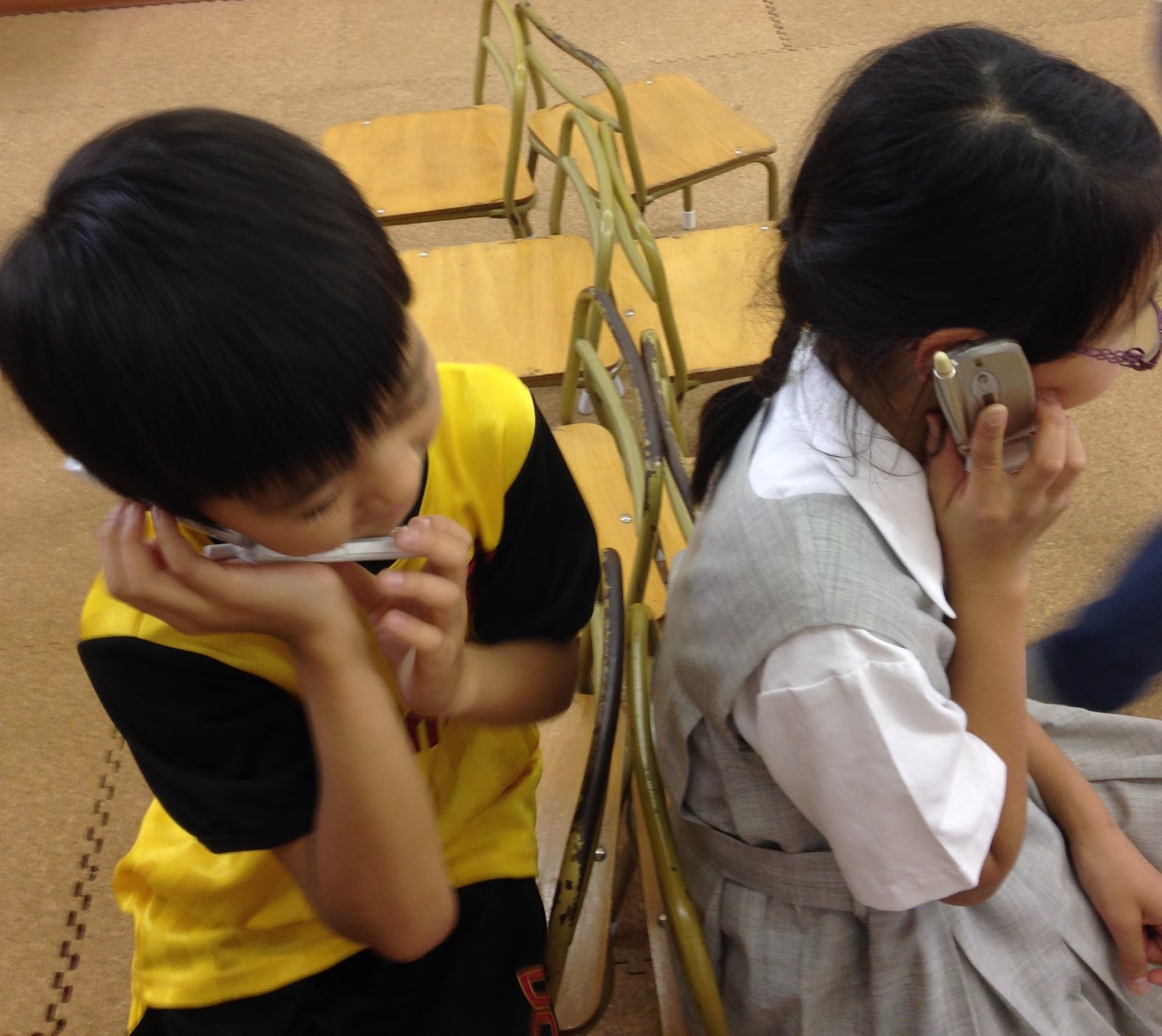
“♪Busy, busy, busy. We are busy all day long. Mom is cooking all day long. Dad is shopping all day long…”
The chant on pg.12 of Learning World Book 3 is a particular favorite with my students. They like the rhythm of it, the challenge level of the vocabulary is not too high, and the tempo is manageable. The increase in tempo the second and third time around adds surprise and excitement.
Now, the additional vocabulary in the WORDS section is quite useful: “practicing the piano”, “driving a car” “listening to music”, “talking with friends” and “waiting for a bus”. I had always felt the need for an activity that uses this vocabulary. So I thought of one that I’d like to share with you here. If you have old, unused cell-phones at your disposal, they can come in handy now! (Incidentally, phone company stores and outlets sometimes have a basket of old phones that you are welcome to take).
To set up, first arrange classroom chairs in pairs, back to back. There is one chair for each student in the class. Phone conversations will happen in these chairs.
Next, anywhere in the room away from the paired chairs, have students open their textbooks to page 12 and a pencil ready. In time, students will circle the pictures in the WORDS section.
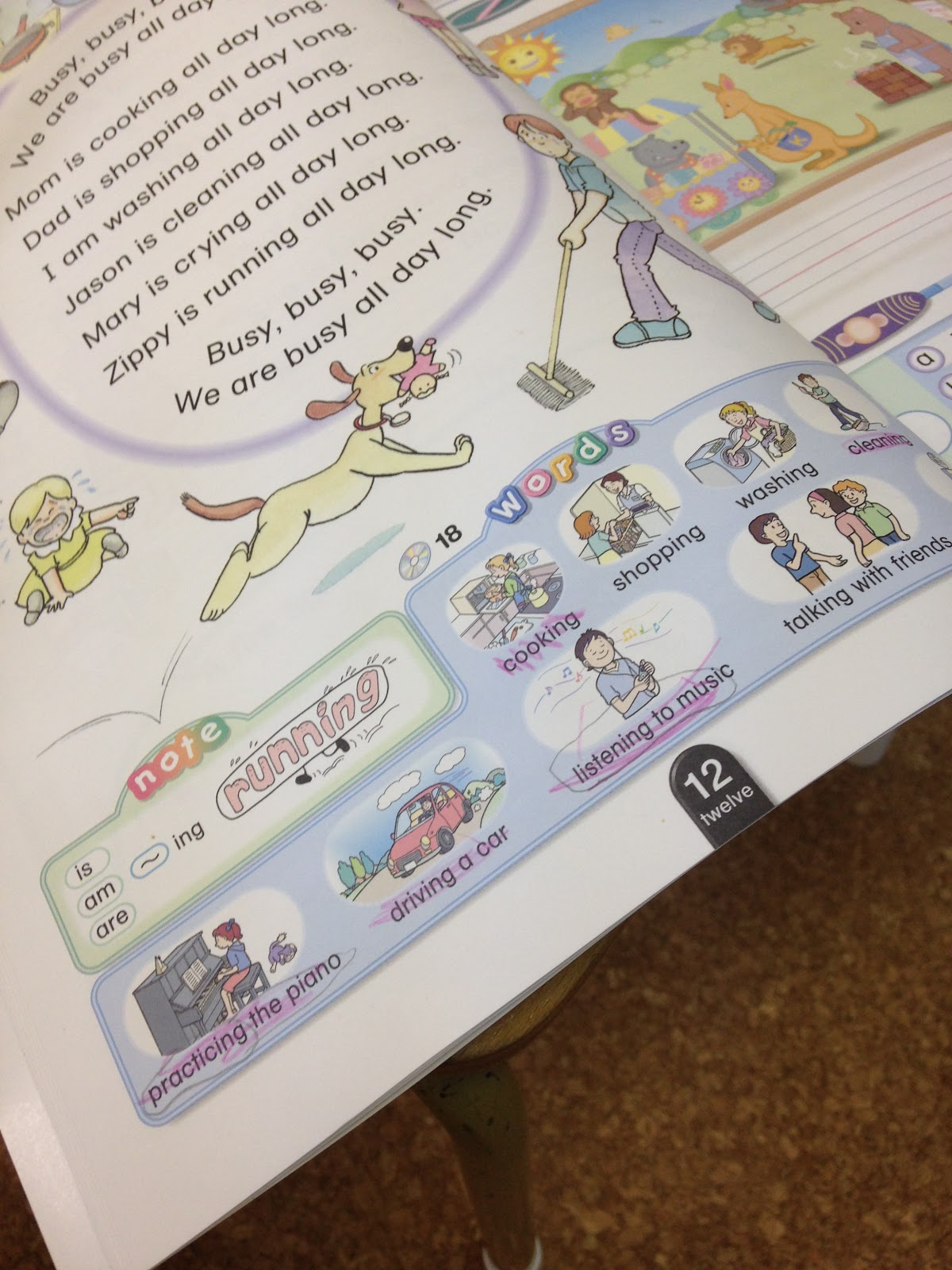
Next, give students a “cell-phone”.
The activity starts with students sitting in the paired chairs and having the following phone conversation:
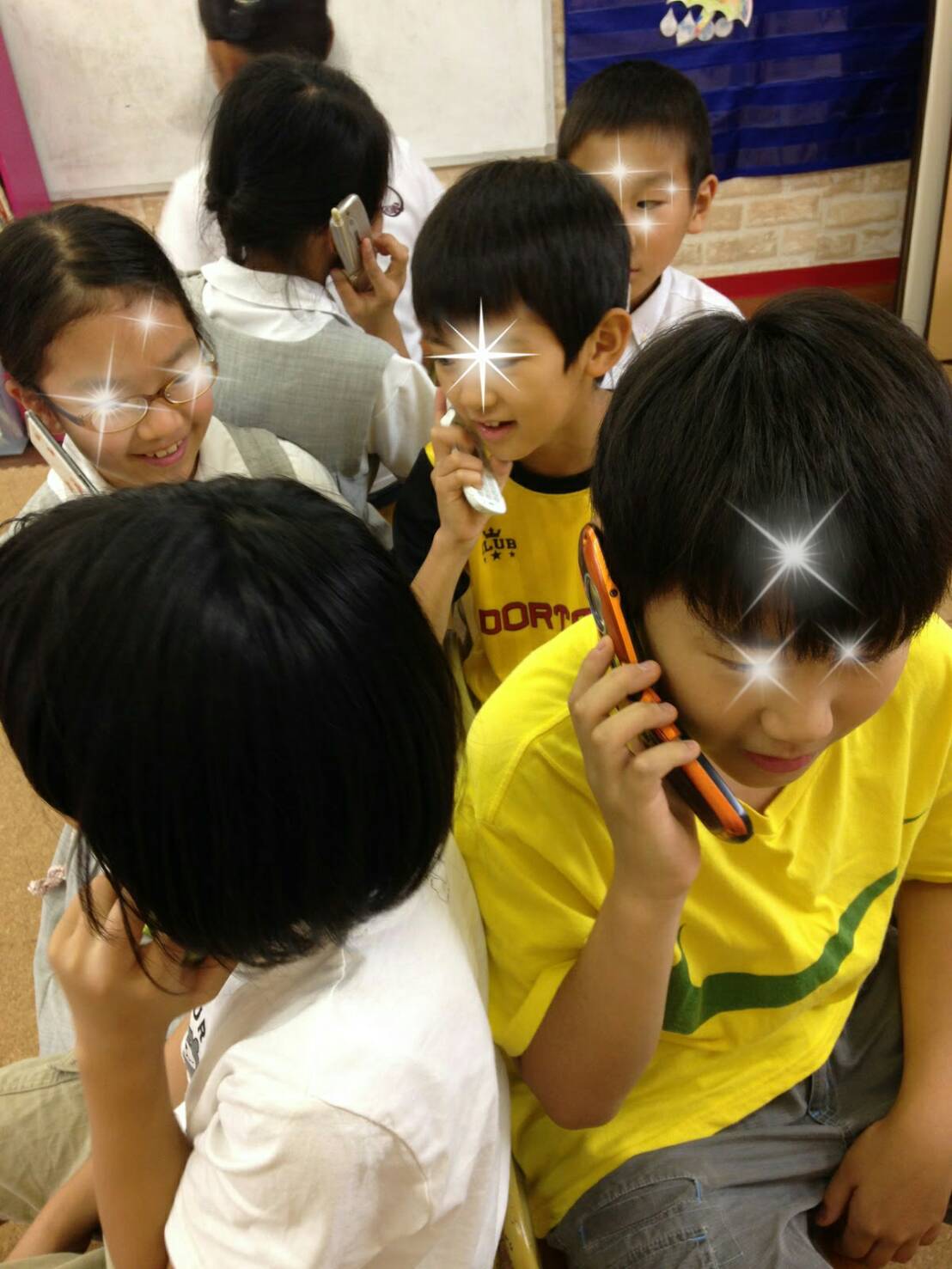
“Hello?”
“Hello, it’s (name). How are you?”
“Hello (name)! I’m fine”.
“What are you doing right now?”
“I’m [cooking/shopping/washing/cleaning….any ONE of the vocabulary items from WORDS]. How about you? What are YOU doing?”
“I’m [cooking/shopping/washing/cleaning….any ONE of the vocabulary items from WORDS].”
“I see! Bye!”
“Bye!”
The opening and the closing of the conversation can be simplified or made more challenging, but the point is that students listen carefully to their friends’ answer to “What are you doing right now?” because when the conversation is finished, students return to their textbooks and circle the vocabulary item their friend used in their conversation.
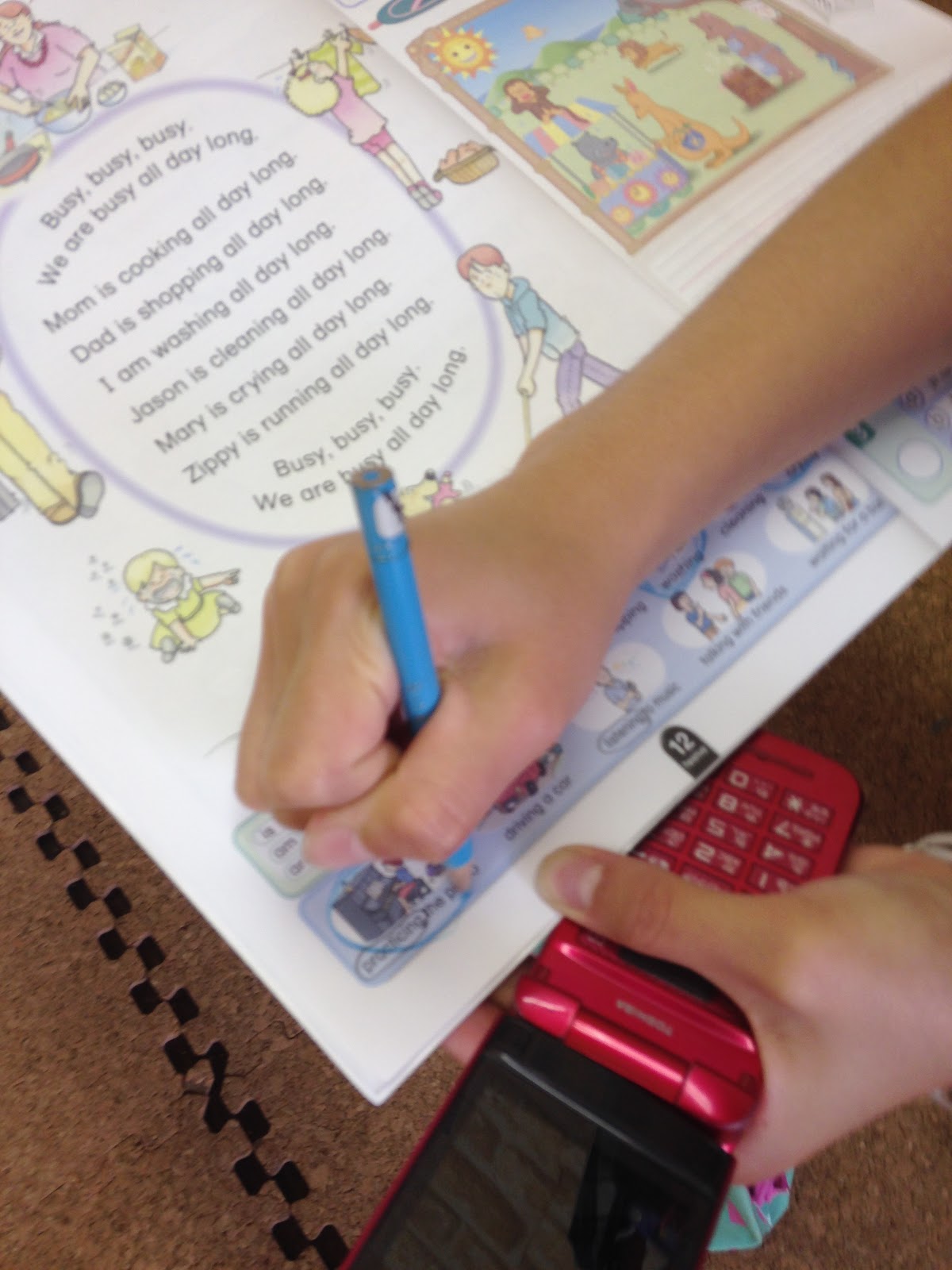
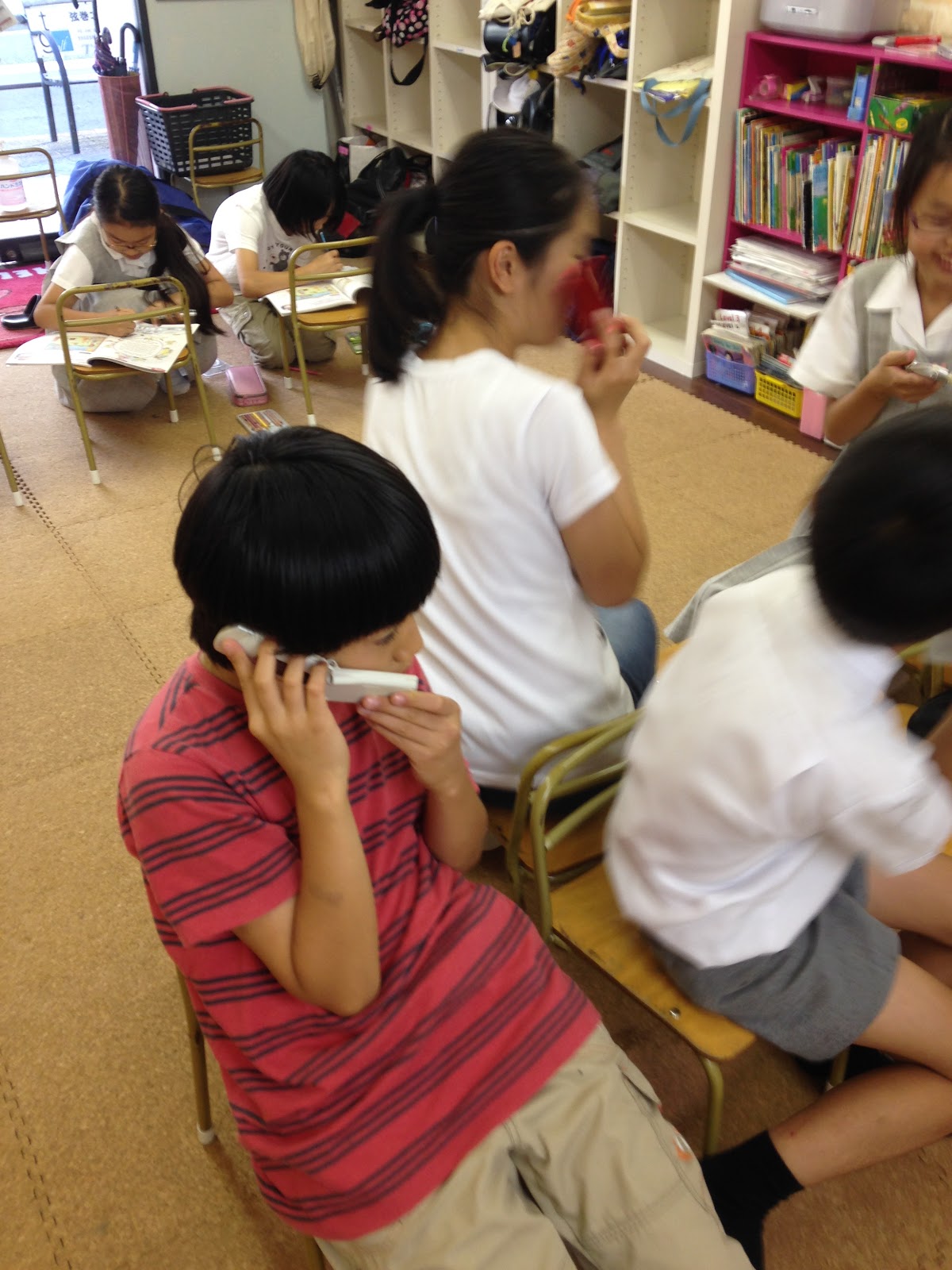
Then, students go and have a new conversation on a different pair of chairs with a different friend and (importantly) using a different vocabulary item. In other words, students cannot simply answer “I’m shopping” or “I’m cooking” with every conversation. They must try and use all the vocabulary items over all the conversations.
The activity is complete when students have circled every picture in the WORDS section.
It’s possible of course that a friend will answer with a vocabulary item that’s already been circled. That’s unlucky. Students must continue having new phone conversations with different friends until every picture is circled(!)
